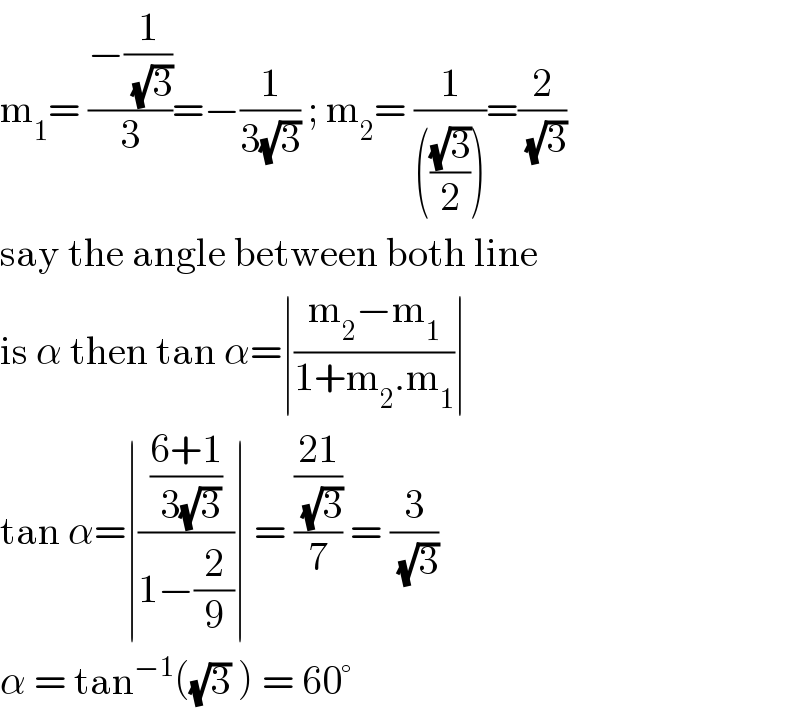
Question and Answers Forum
Question Number 112902 by mohammad17 last updated on 10/Sep/20

Answered by bemath last updated on 10/Sep/20

Commented by mohammad17 last updated on 10/Sep/20

Answered by mathmax by abdo last updated on 10/Sep/20
![3y+(x/(√3)) =1 ⇒3(√3)y +x =(√3) ⇒x+3(√3)y−(√3)=0 ⇒the director verctor is u^→ (−3(√3),1) ((√3)/2)y−x =2 ⇒(√3)y−2x =4 ⇒−2x+(√3)y−4=0 ⇒2x−(√3)y+4=0 ⇒ the director vector is v^→ ((√3),2) cos(u,v) =((u.v)/(∣u∣.∣v∣)) and sin(u,v) =((det(u,v))/(∣u∣.∣v∣)) ⇒tan(u,v) =((det(u,v))/(u.v)) =( determinant (((−3(√3) (√3))),((1 2)))/((−3(√3)).(√3)+1×2)) =((−7(√3))/(−7)) =(√3) we have tan(u,v) =(√3) ⇒(u,v) =(u,v) =(π/3)[π]](Q112950.png)
Commented by mohammad17 last updated on 10/Sep/20

Commented by mathmax by abdo last updated on 11/Sep/20

Answered by Dwaipayan Shikari last updated on 10/Sep/20

Commented by mohammad17 last updated on 10/Sep/20

